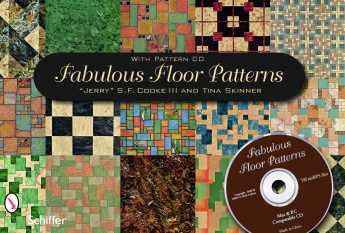Peeling Back the Layers of Laminate










Technology keeps advancing in the floor covering industry, leading to more options, higher-quality products and new levels of design. Nowhere is this more apparent of late than with laminate flooring.
To help keep you current on key industry issues and trends, floor trends sponsors several market studies each year. These quantitative research studies serve as the foundation for a series of informative, educational features designed to provide a deeper, more insightful look at the state of the various segments of the floor covering industry.
The purpose of ft’s laminate flooring market study is to obtain and report accurate information from flooring dealers/contractors concerning their laminate business in today’s competitive marketplace. Specifically, the study seeks to identify trends in the market with respect to:
• Current and future expected sales
• Frequency of recommending laminate flooring to customers
• Product perception among customers
• Factors affecting the brand sell/promote decision
• Perceived challenges in the market
The survey went out in June to12,067 floor trends andFloor Covering Installer subscribers, selected on an Nth name basis, whose primary business is flooring dealer/contractor, who sell laminate flooring and who have the authority to approve, specify or recommend flooring products.
Sales
Seven out of ten respondents perceive laminate to be a profitable alternative to wood, while slightly less than a fifth of total respondents perceive laminate to be profitable over wood, resilient/vinyl, ceramic and stone (Chart 1). The average share of total floor space devoted to laminate is still little more than 10 percent.
The average number of monthly laminate sales has not changed dramatically over the past year. Mean annual laminate sales this year are at $75,665, with a consistent increase seen in the $50,000 - $99,000 range during the past two years. The average ticket amount per sale has shown a slight increase, from $1,488 in 2010 to $1,655 this year, with 33% of respondents citing an average of $2,000 or more per sale.
Glueless installation still dominates over products requiring adhesives, making up 93% of respondents’ laminate sales.
An improving economy is cited as the prime reason by those respondents expecting an increase in residentiallaminate sales, while LVT sales are most often singled out by those expecting a decrease in the same category. Over half of the total respondents this year and in past years do not expect any change in laminate sales in the commercialsegment in 2012 (Chart 2).
Perceptions and Factors
“Product Reliability and Quality” tops the list of factors affecting the brand sell/promote decision, as indicated by more than seven out of ten respondents the last two years. “Product Design and Styling” has emerged as an important factor in the segment, with only about half of respondents mentioning it four years back vis-à-vis more than six out of ten respondents mentioning it in the last two years (Chart 3).
Product innovation and alternative hard surface flooring options are the perceived future challenges in the laminate market, as indicated by more than half of all respondents; six out of 10 say laminate is perceived to be high on durability.
Styles, trends and purchasing power will always influence the floor covering market, both commercial and residential. If the economy keeps showing gains, laminate should continue showing strength in the coming months.
The ftMarket Study Series is intended to help manufacturers and retailers better understand their markets and, more importantly, each other. This article is a snapshot of a comprehensive study examining trends and opinions in and of the floor covering industry. The conclusions are based on the opinions, preferences and purchasing behavior of professionals who agreed to participate in the survey.
The survey was conducted and findings were compiled by BNP Market Research, a division of BNP Media. To find out more, contact Ulka Bhide at bhideu@bnpmedia.com.
Looking for a reprint of this article?
From high-res PDFs to custom plaques, order your copy today!













